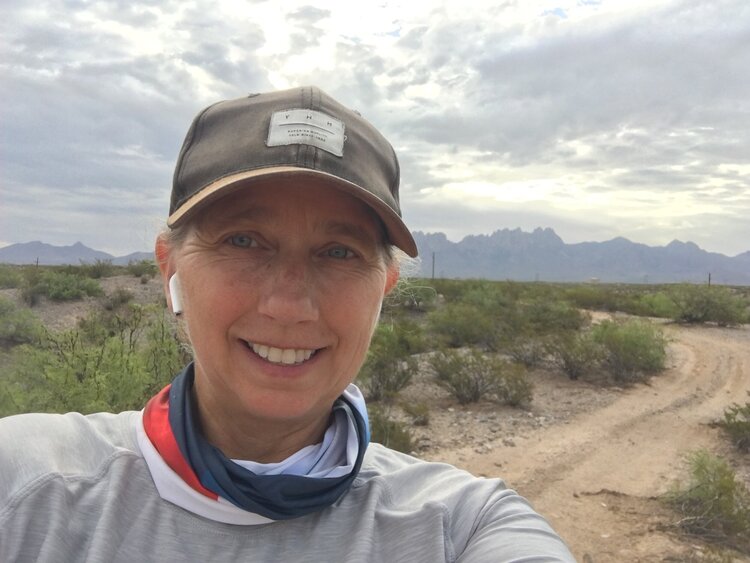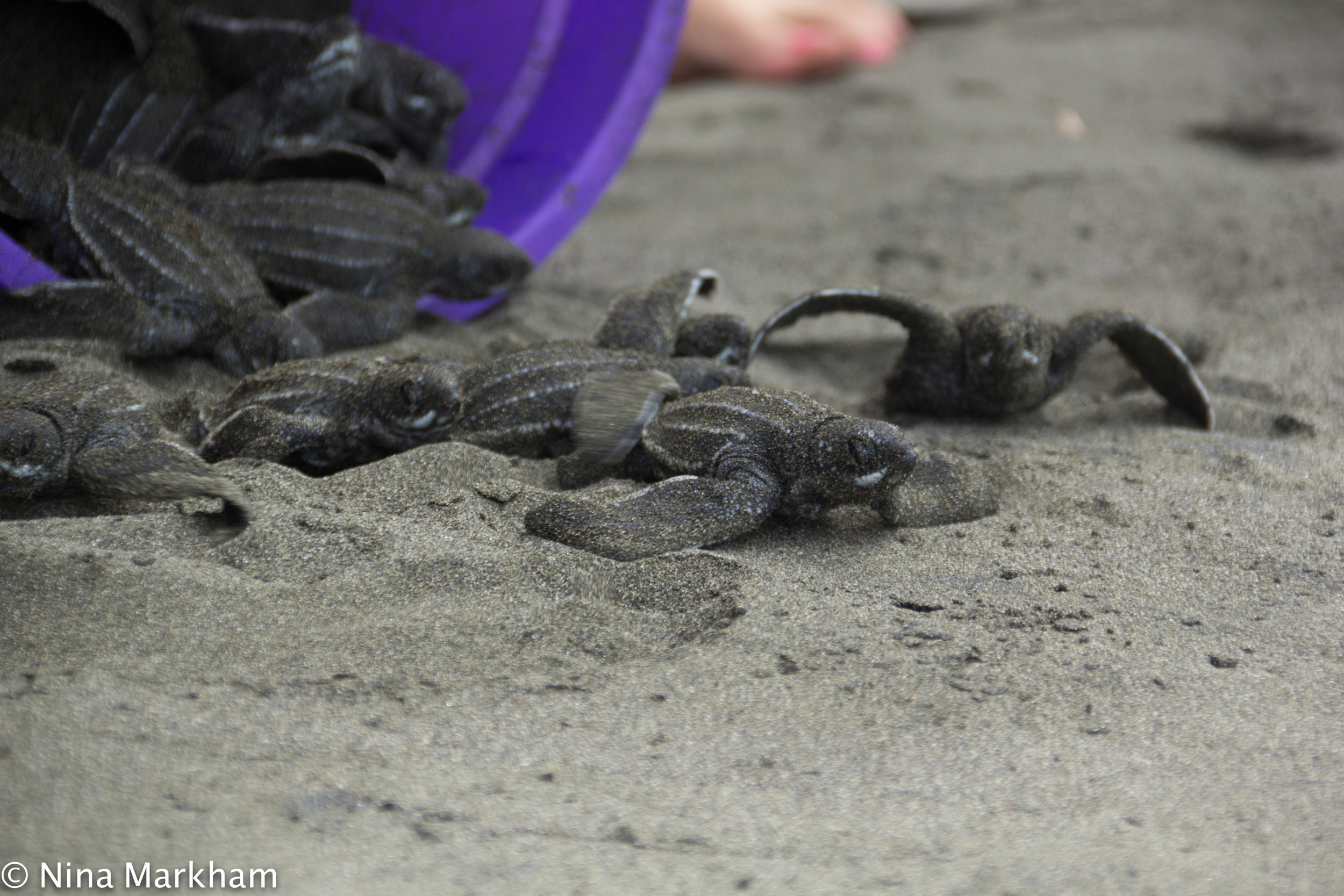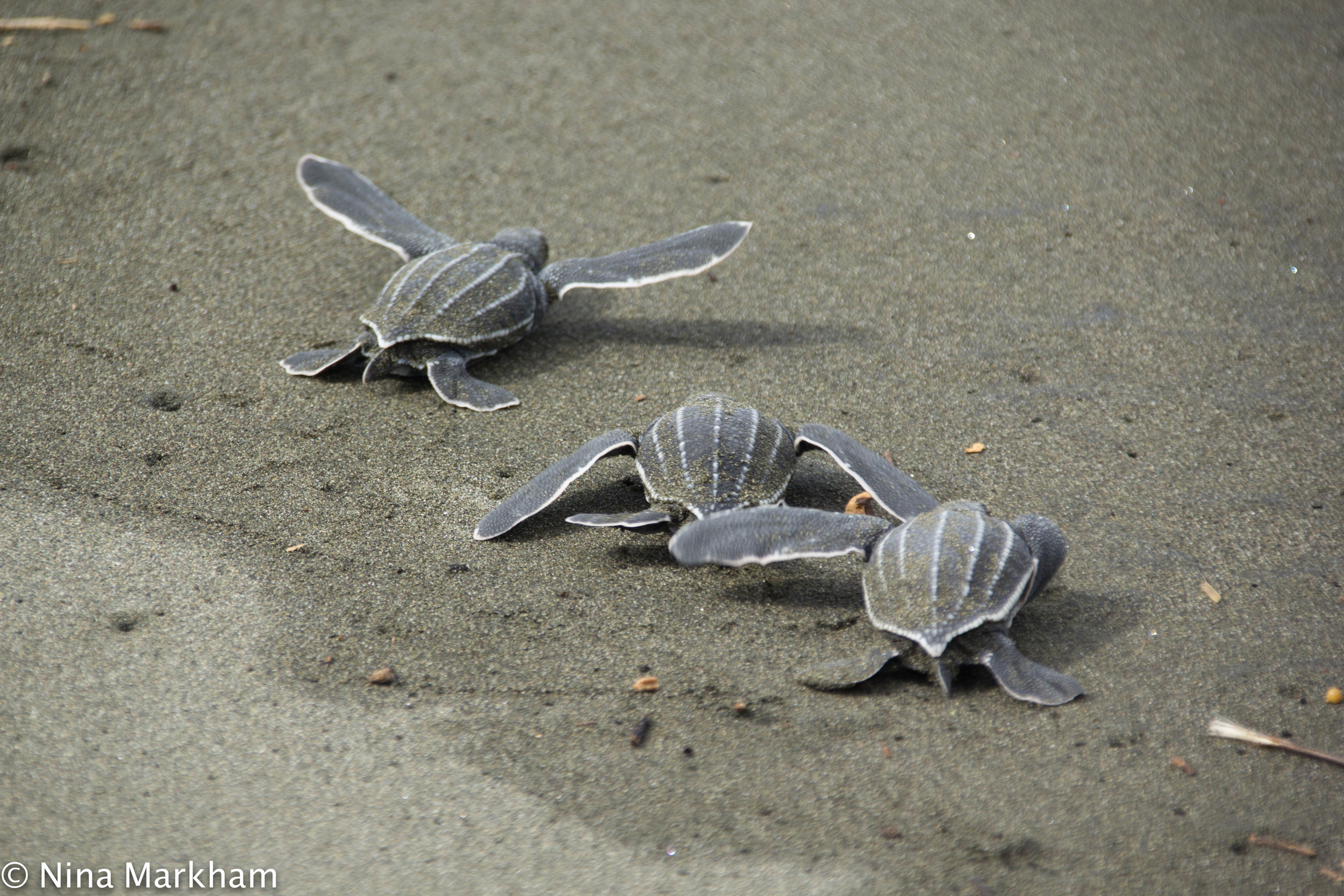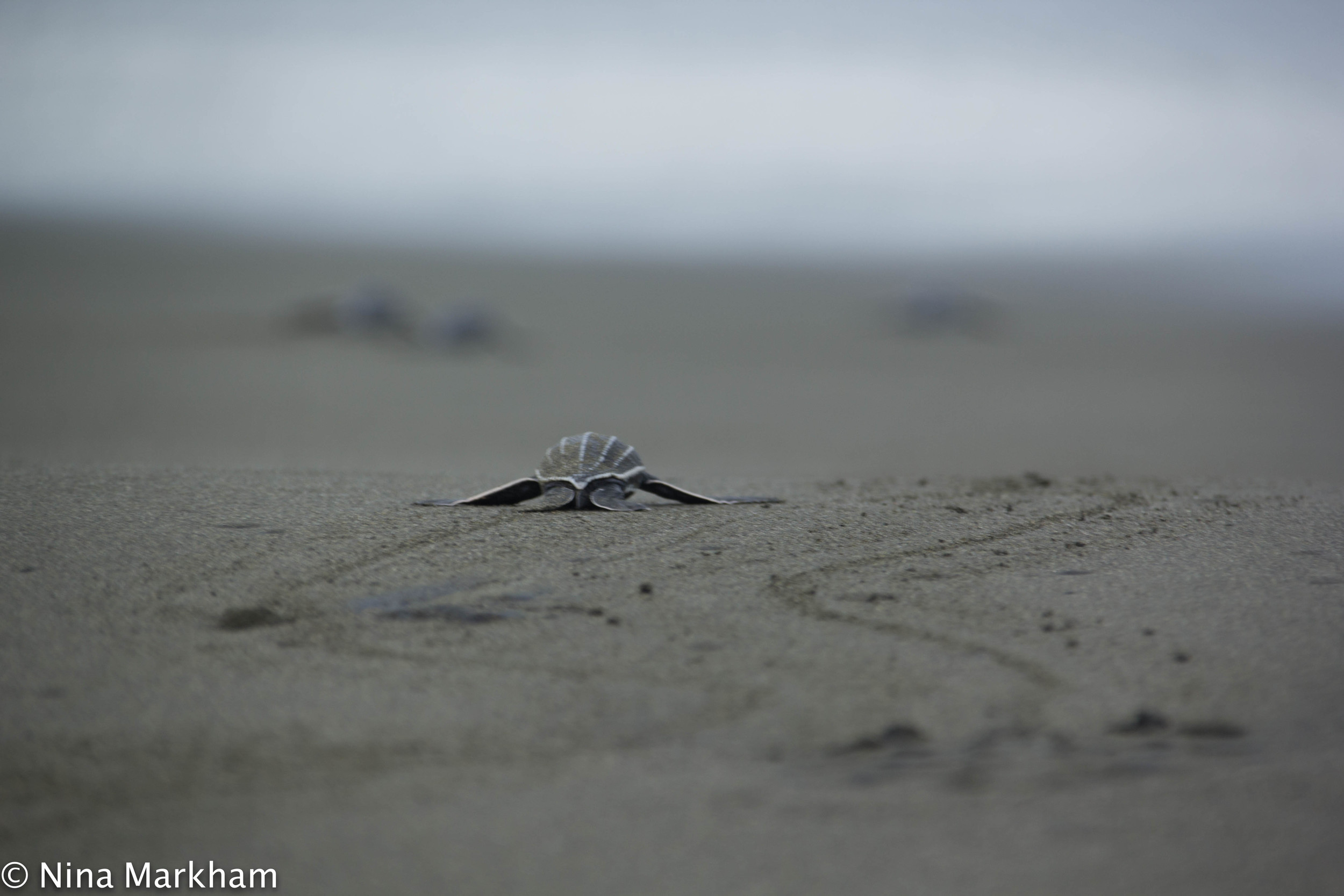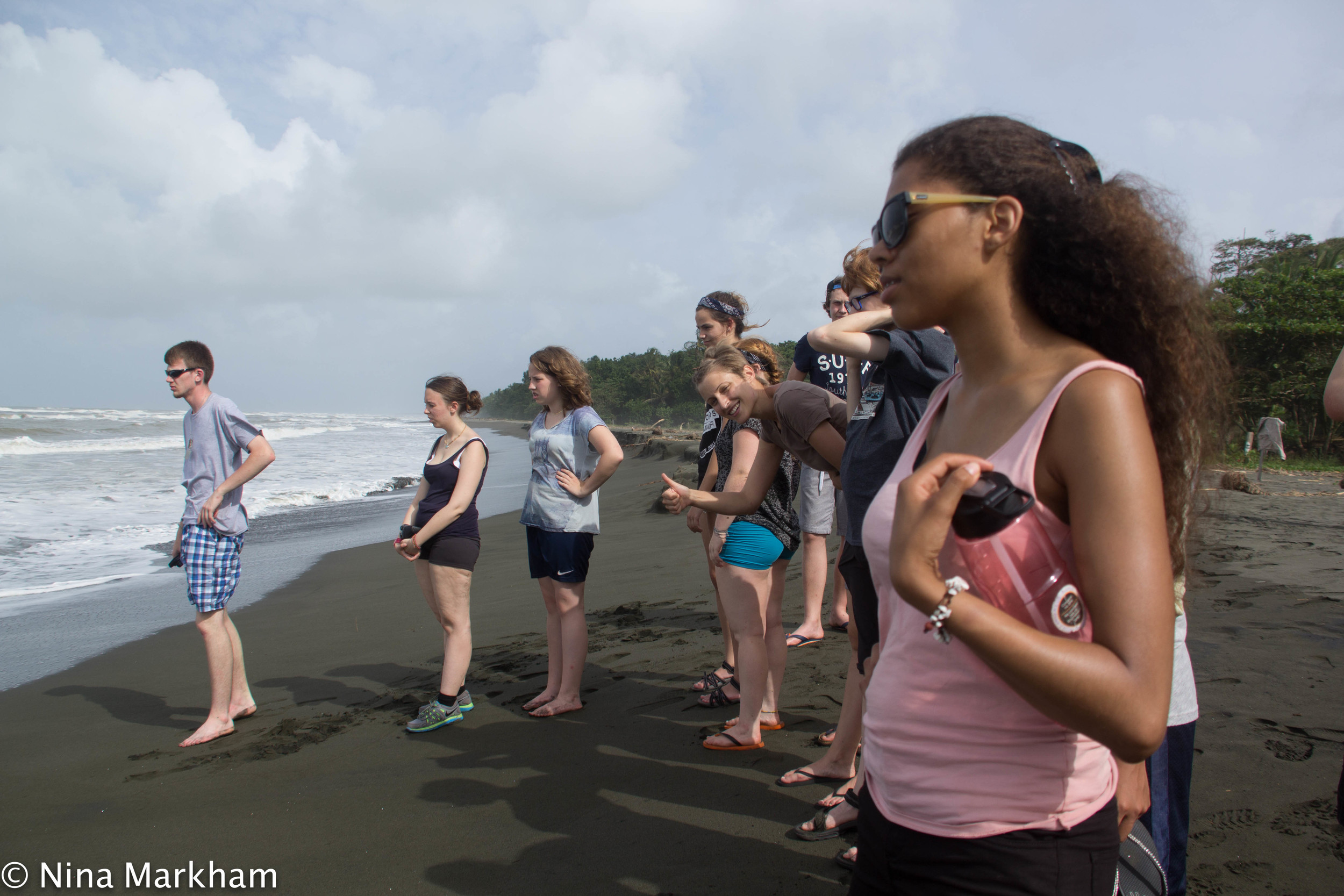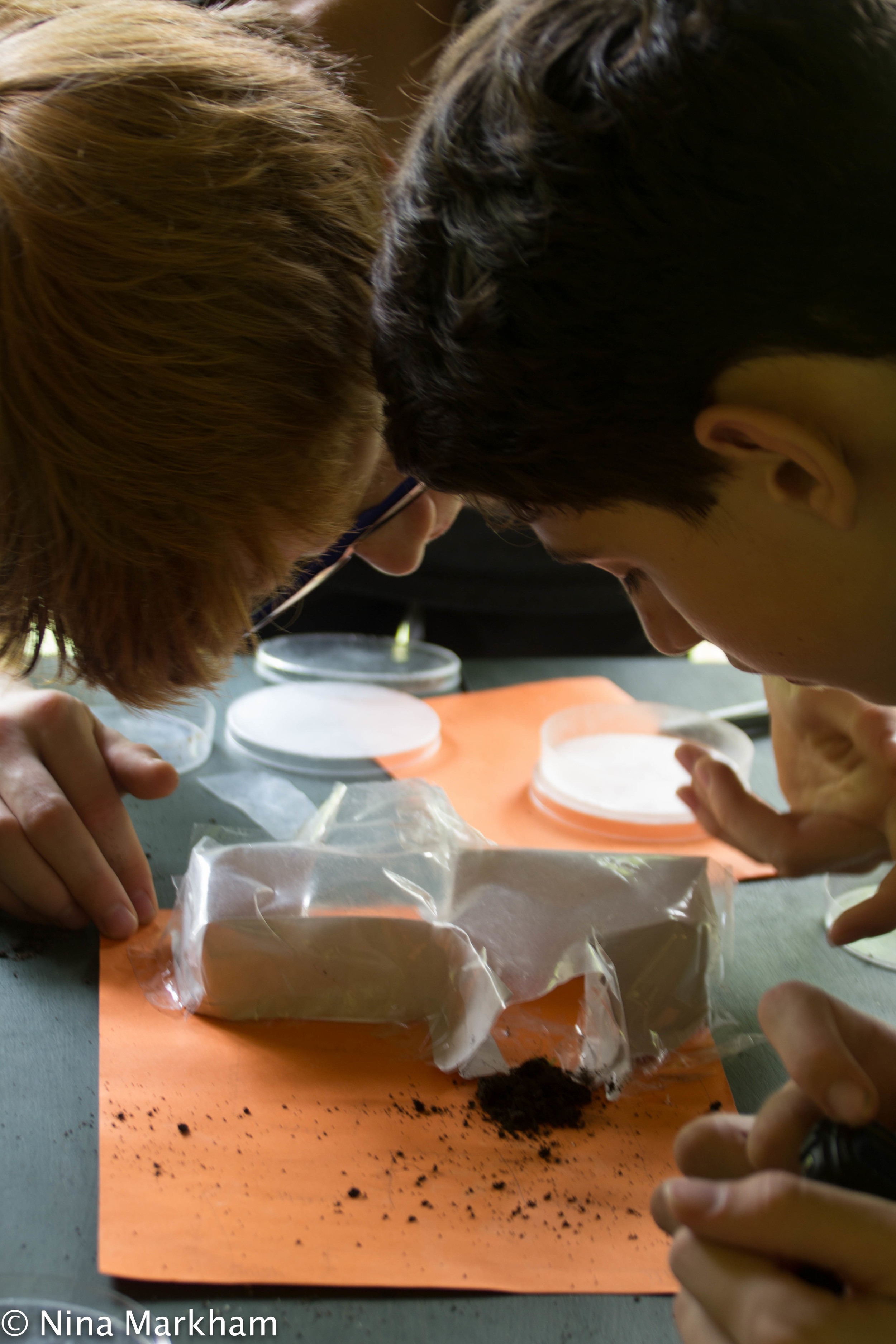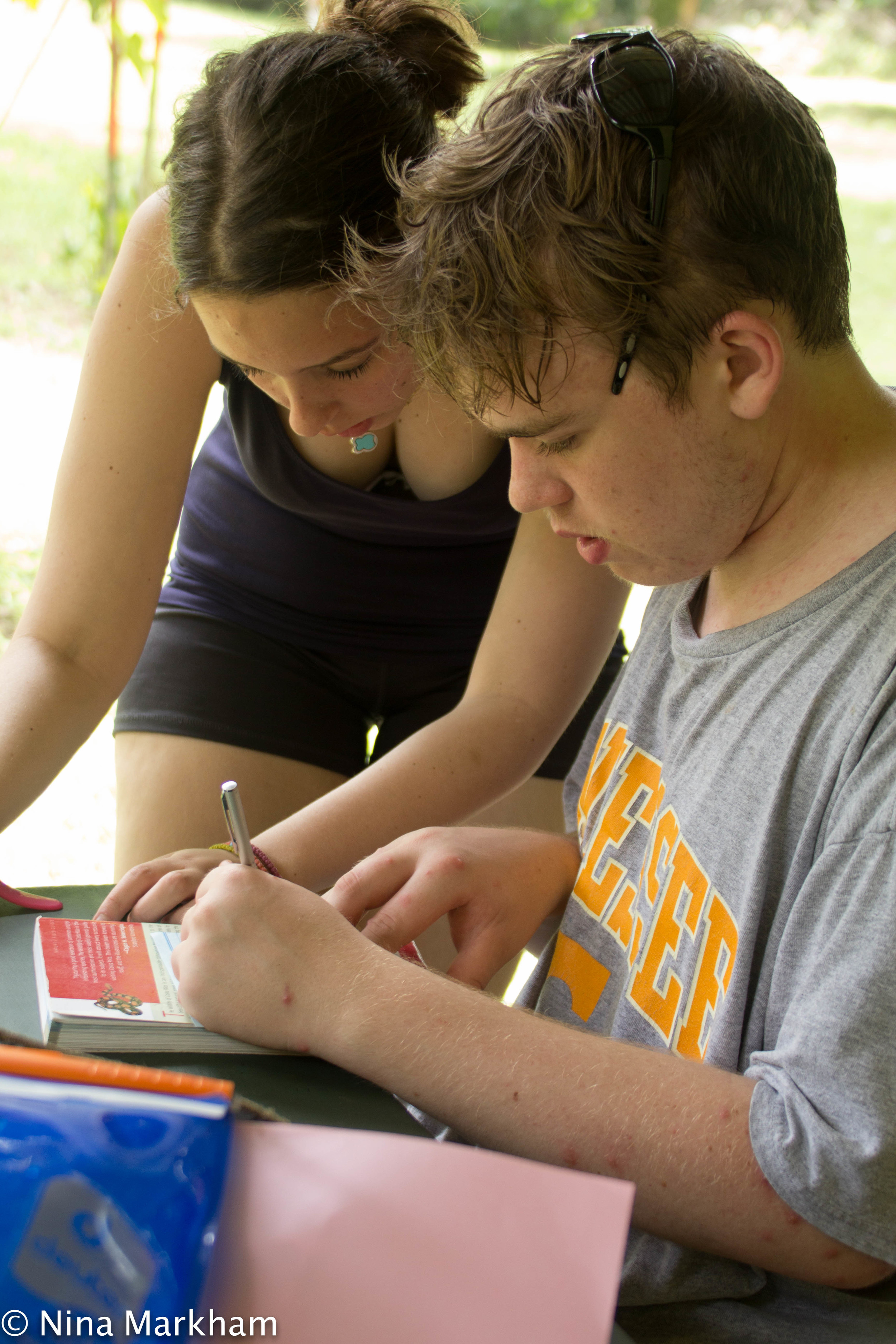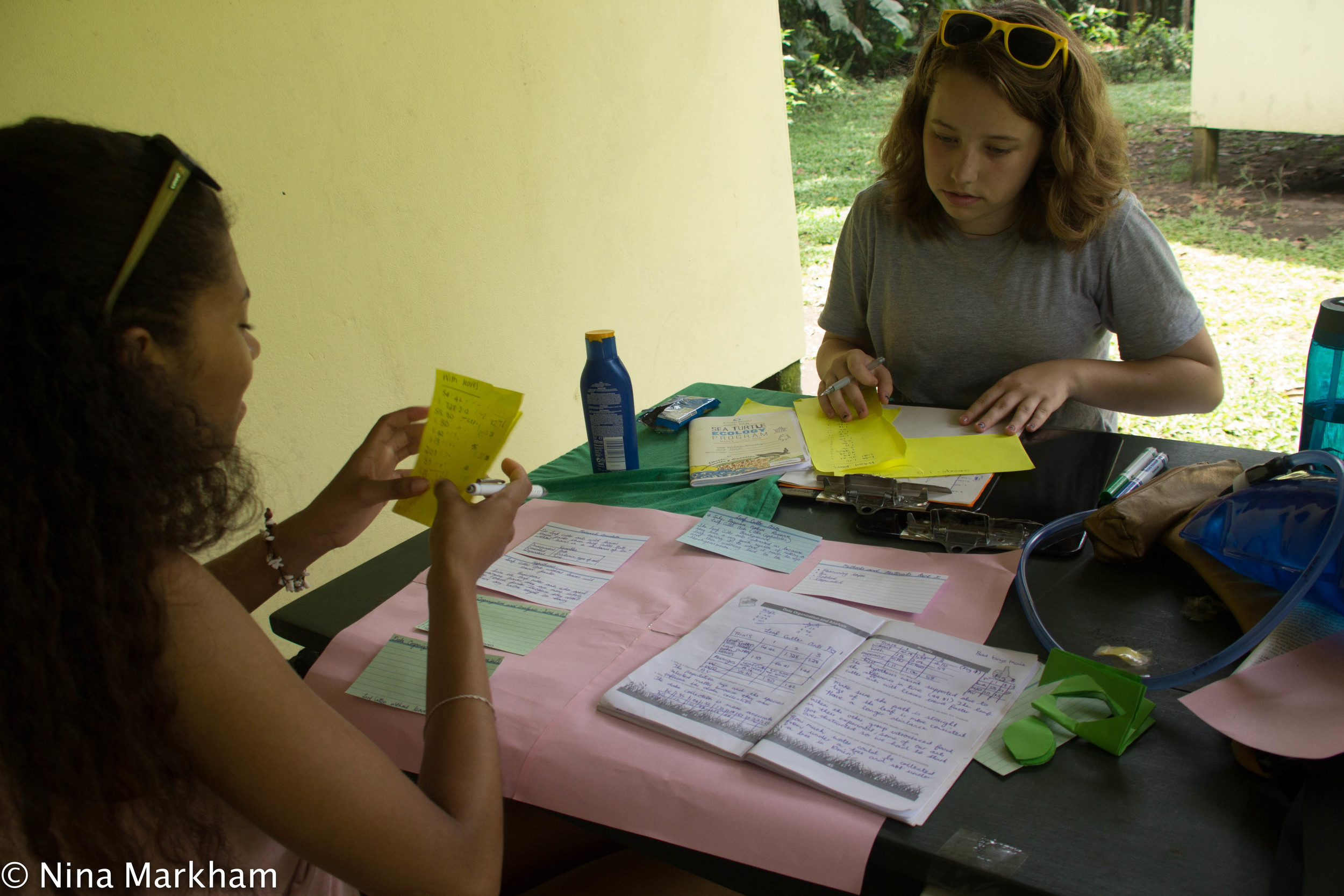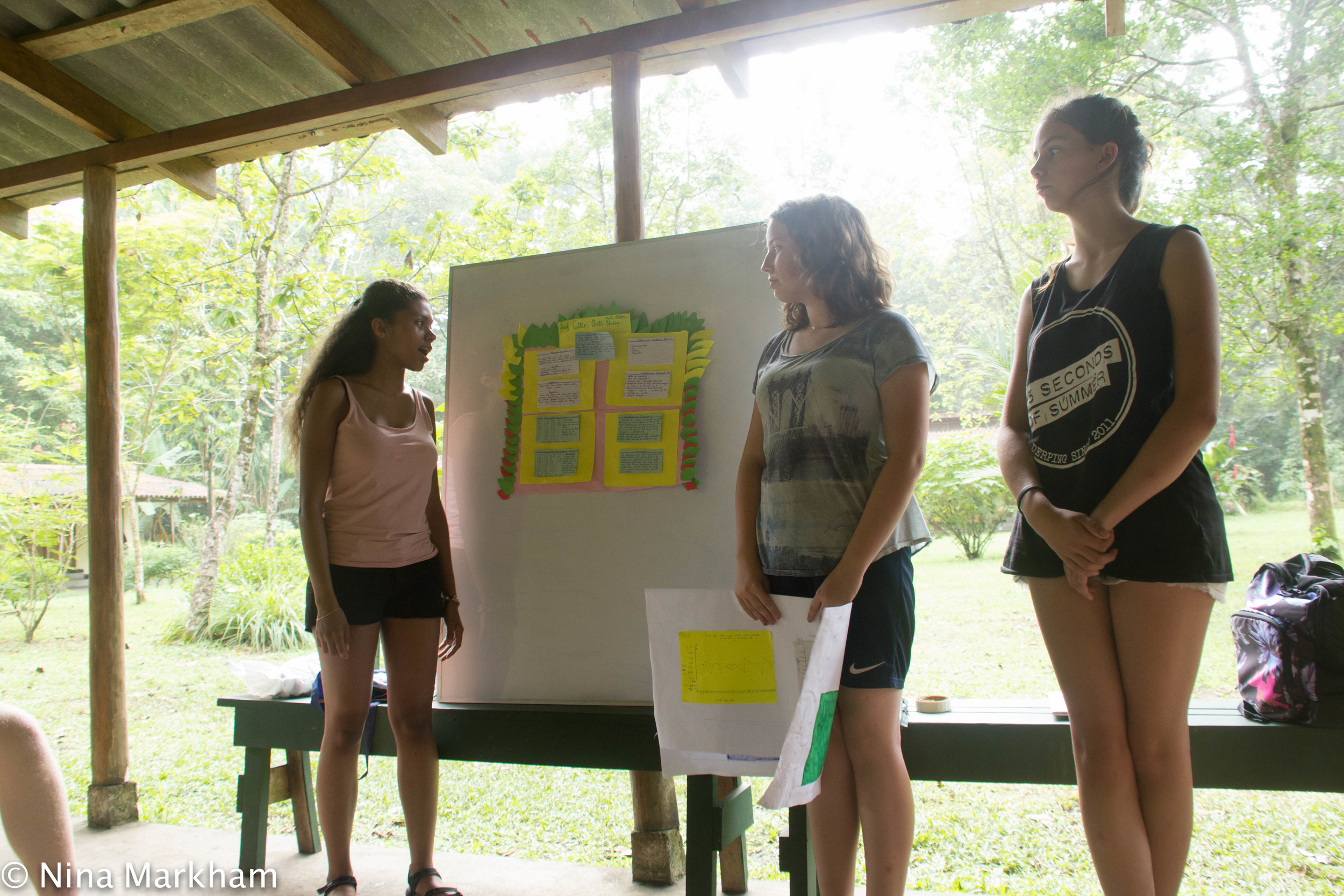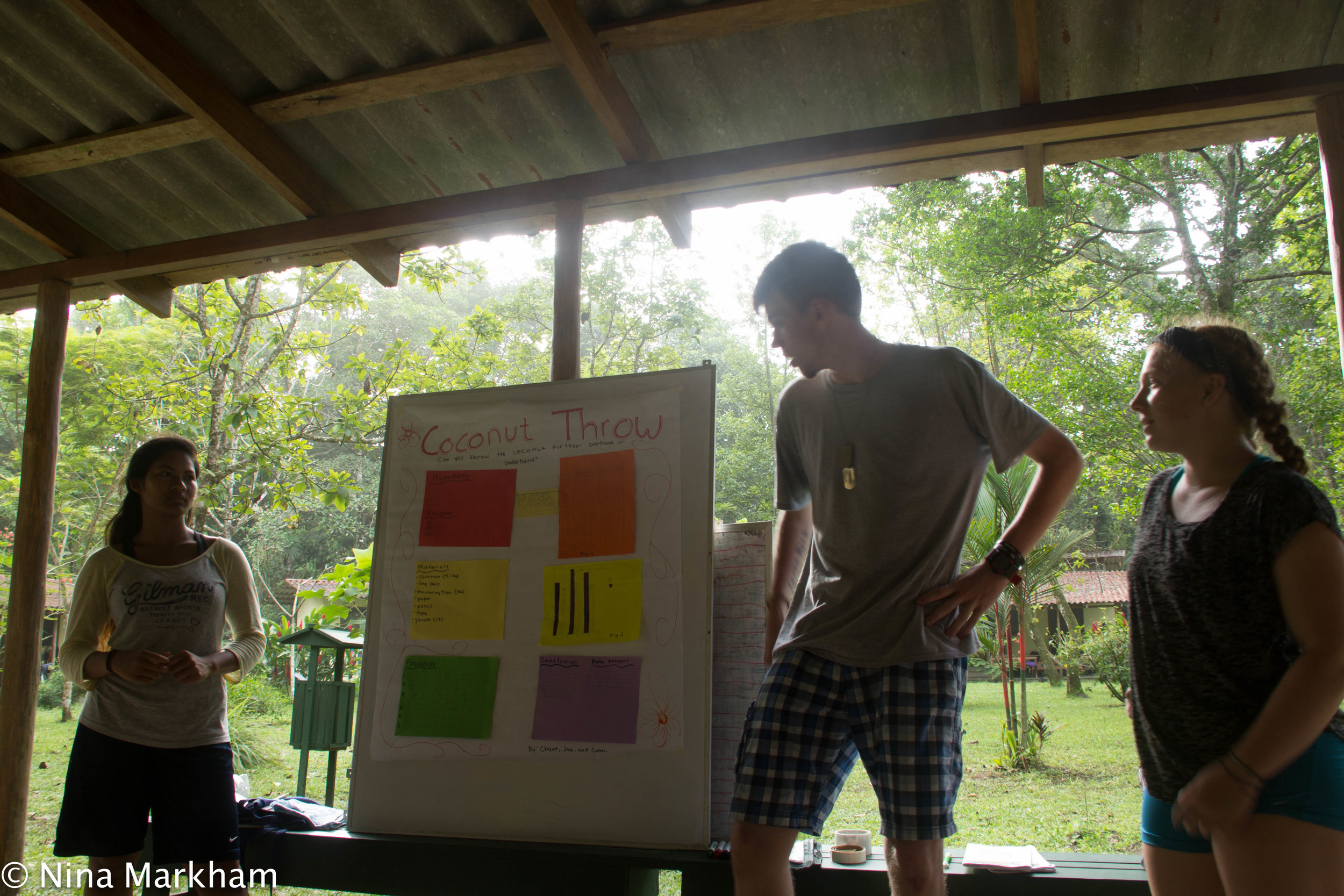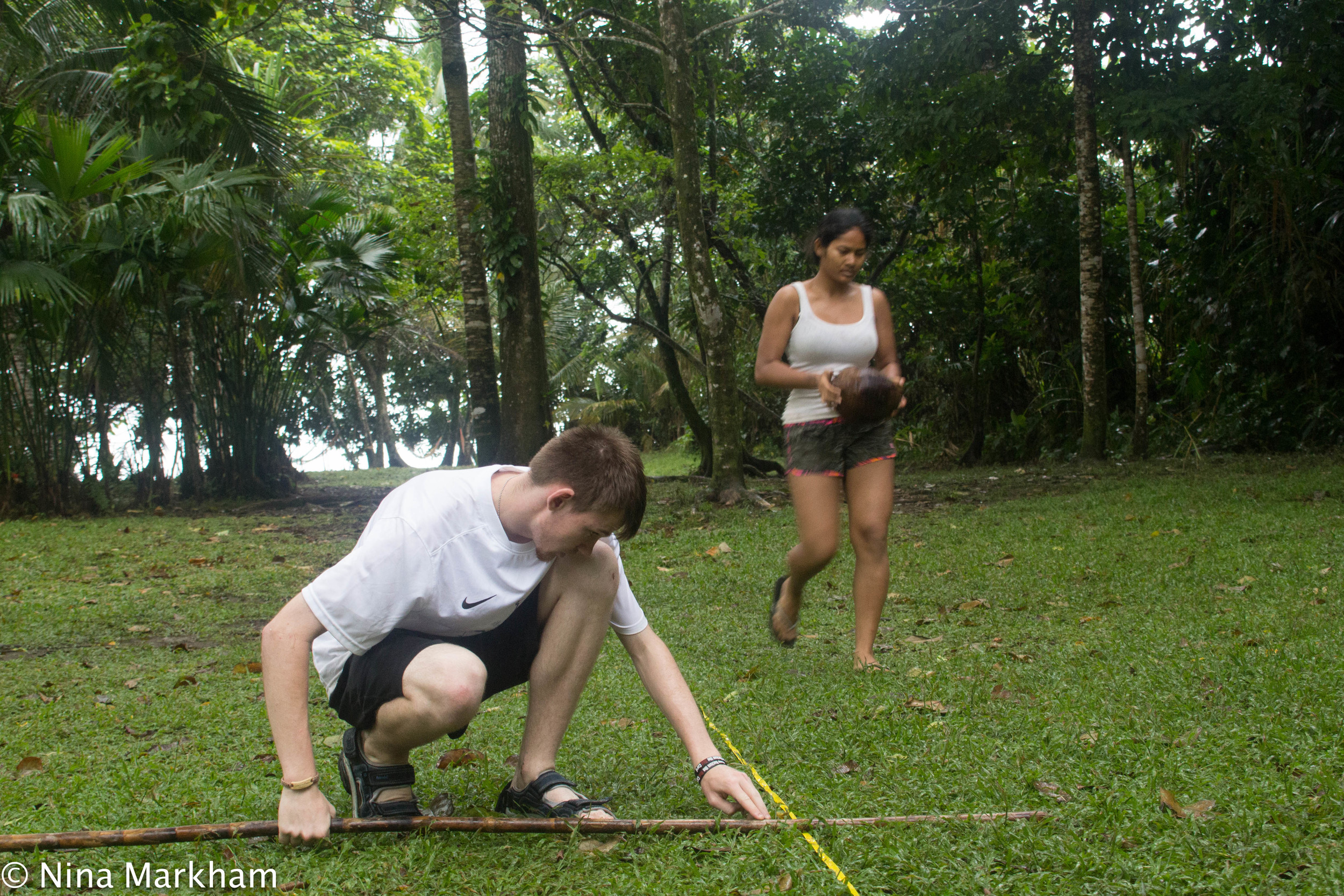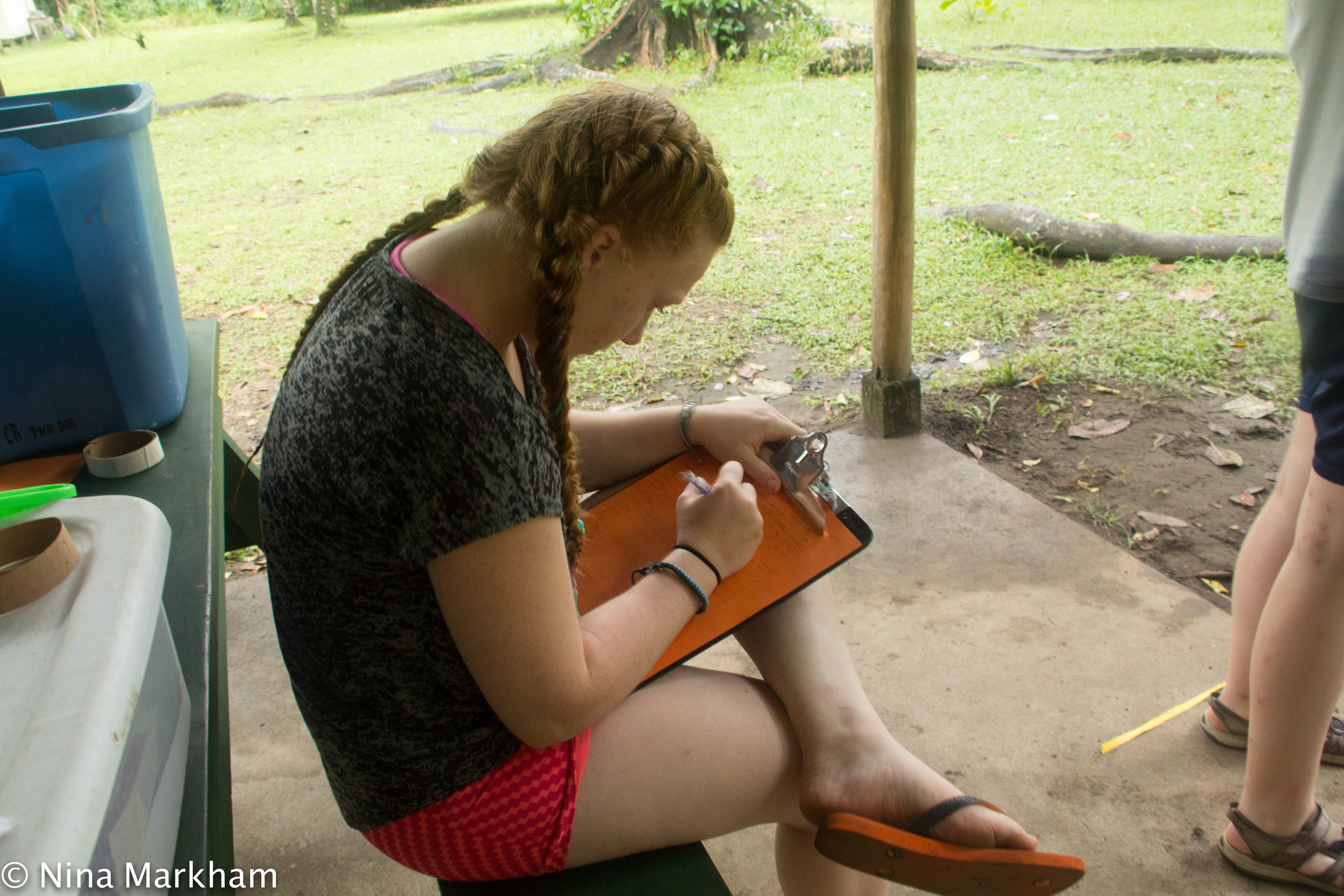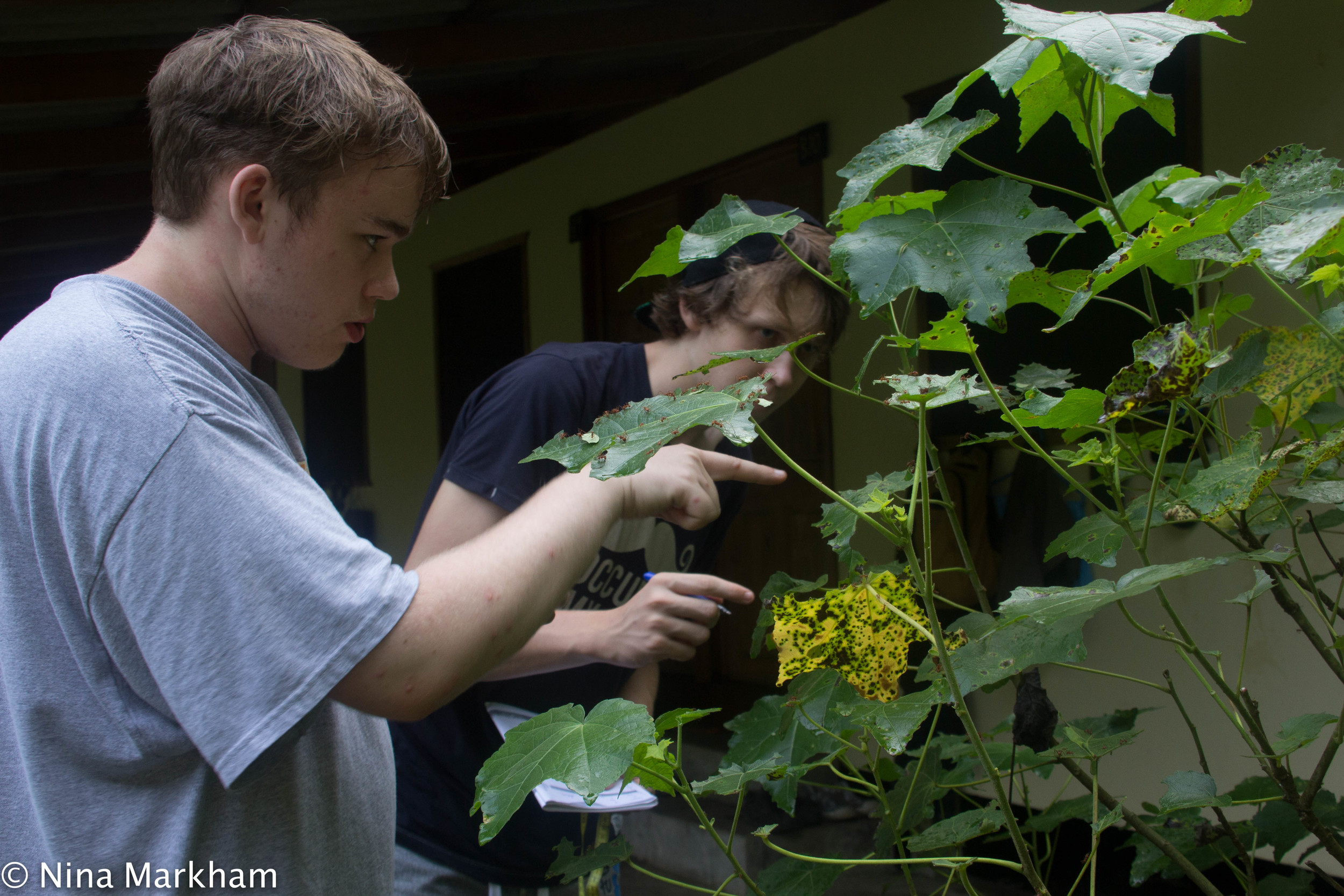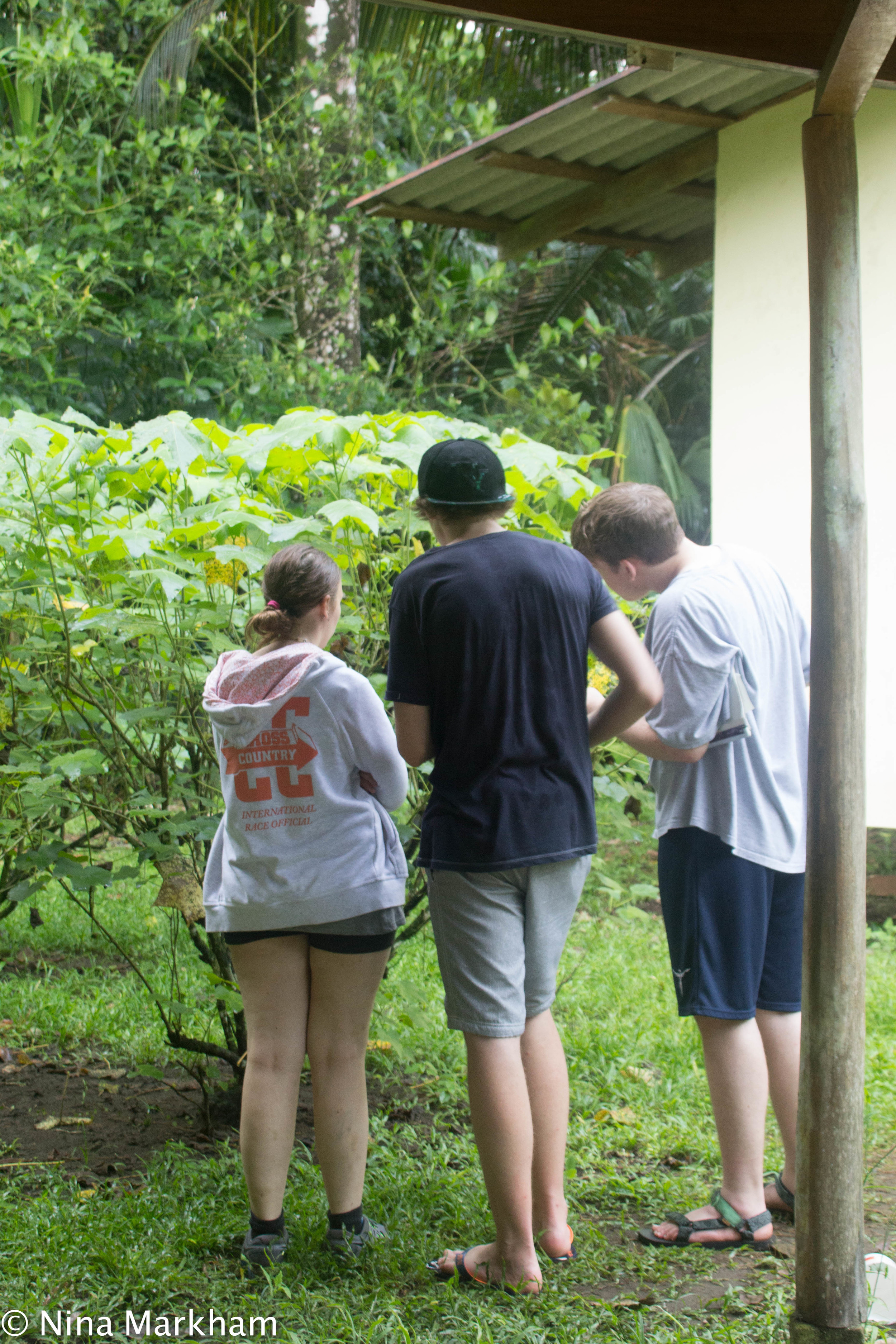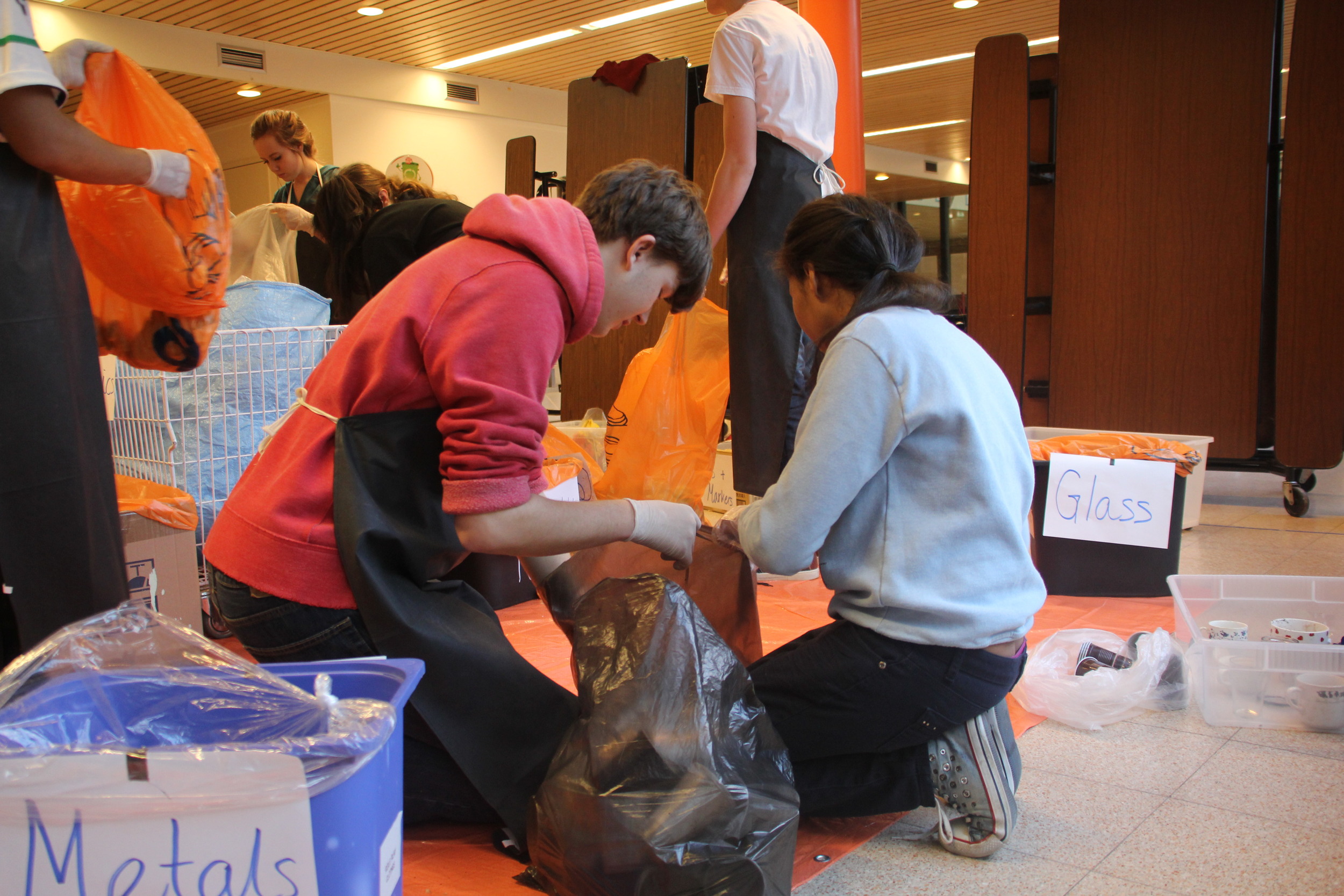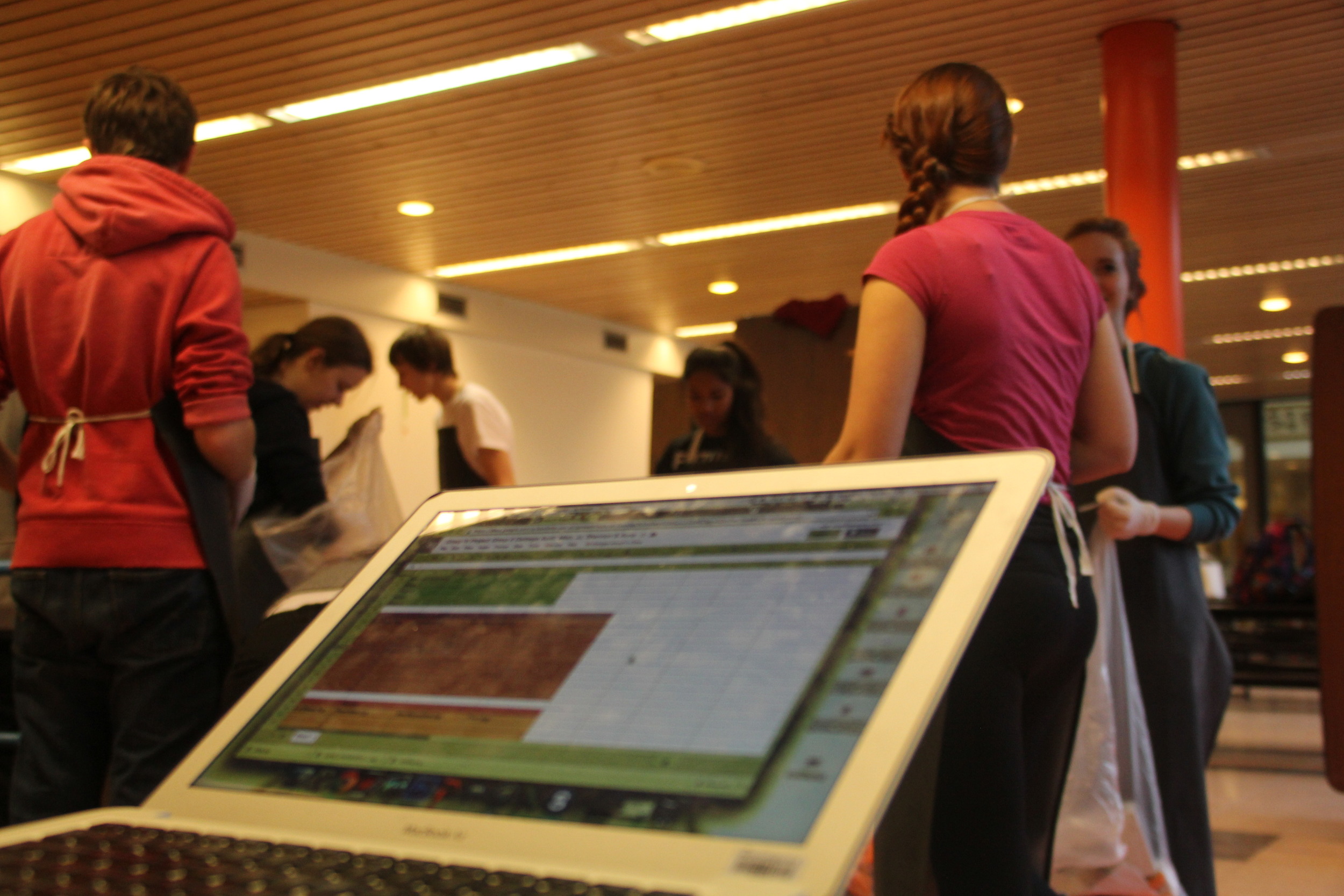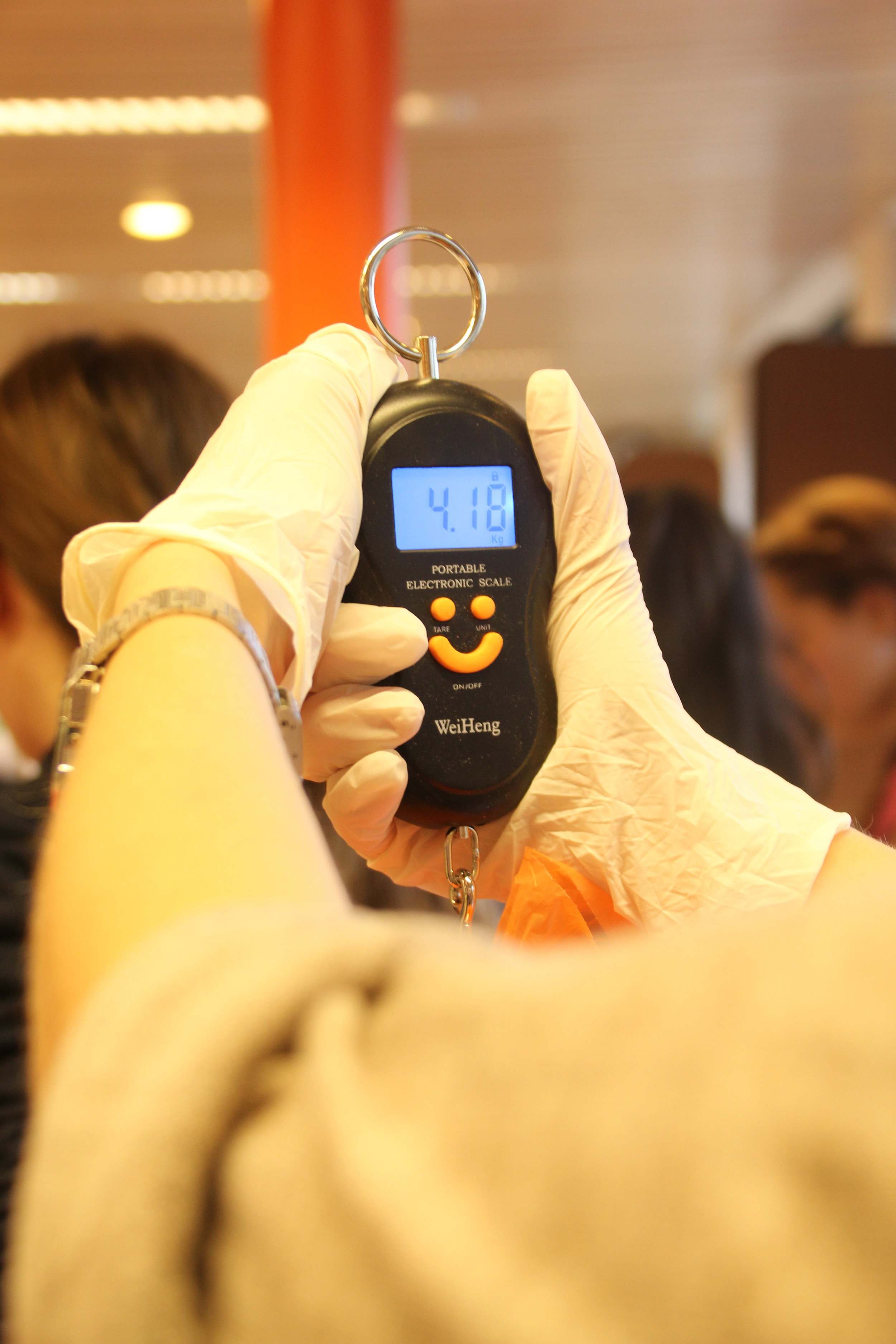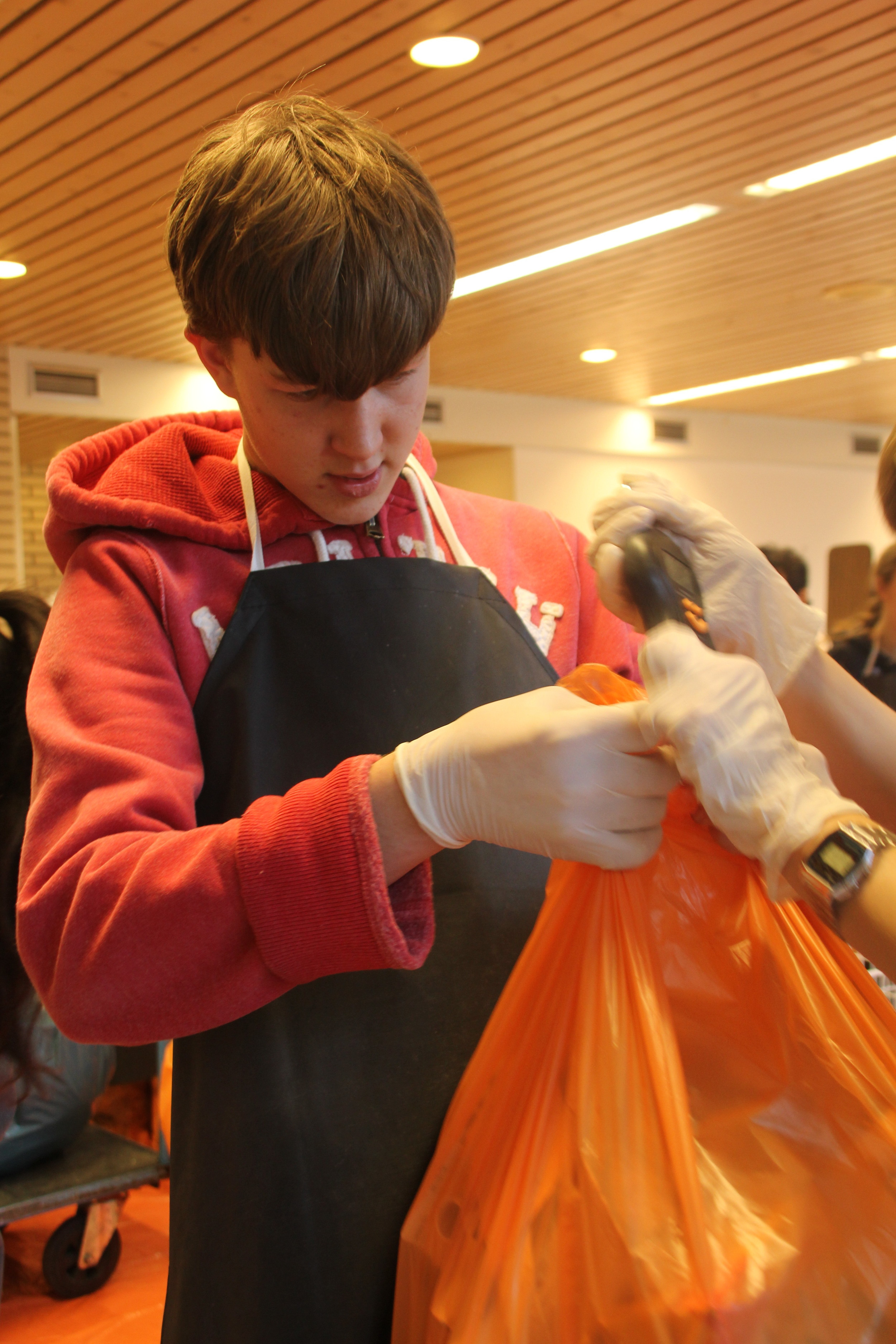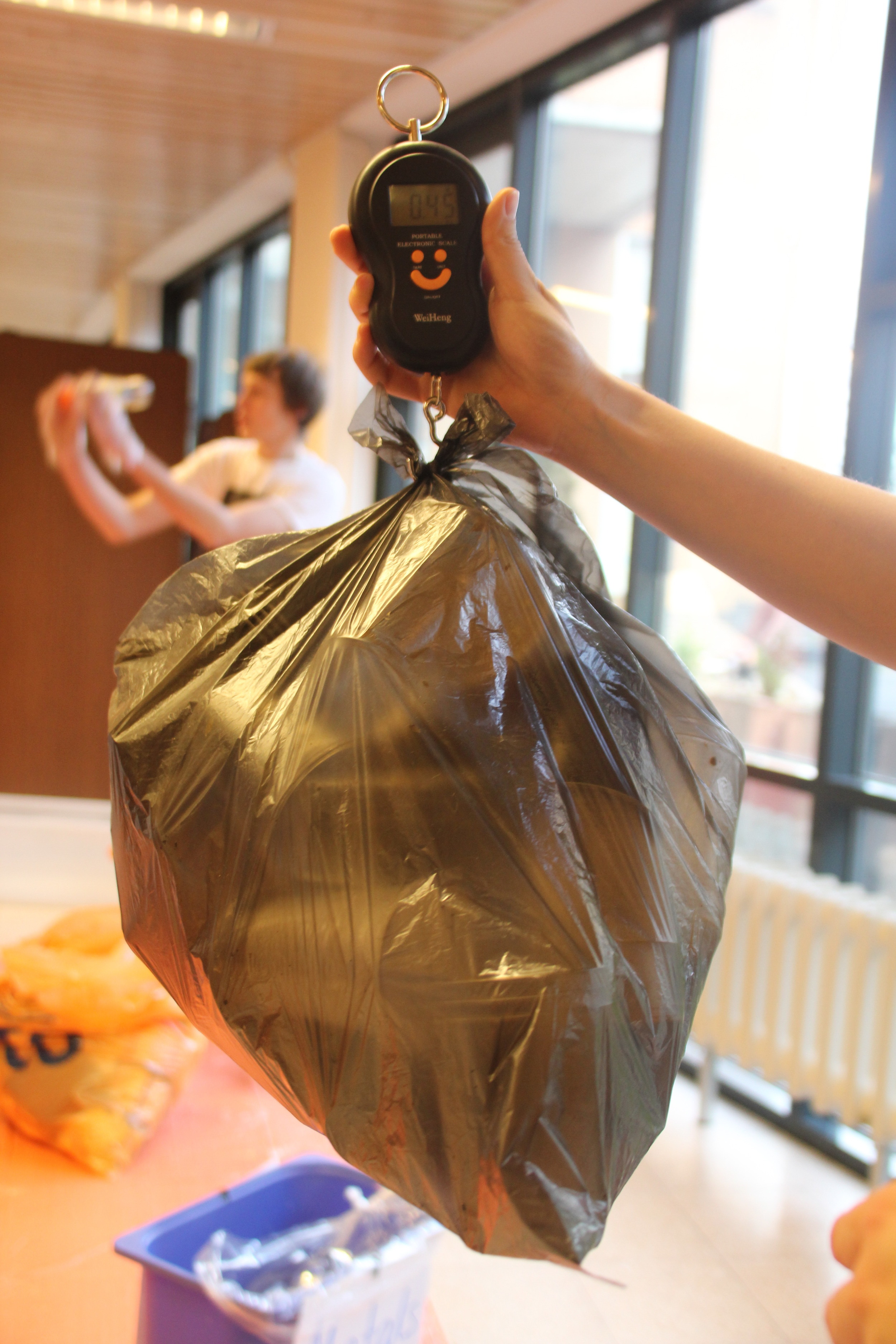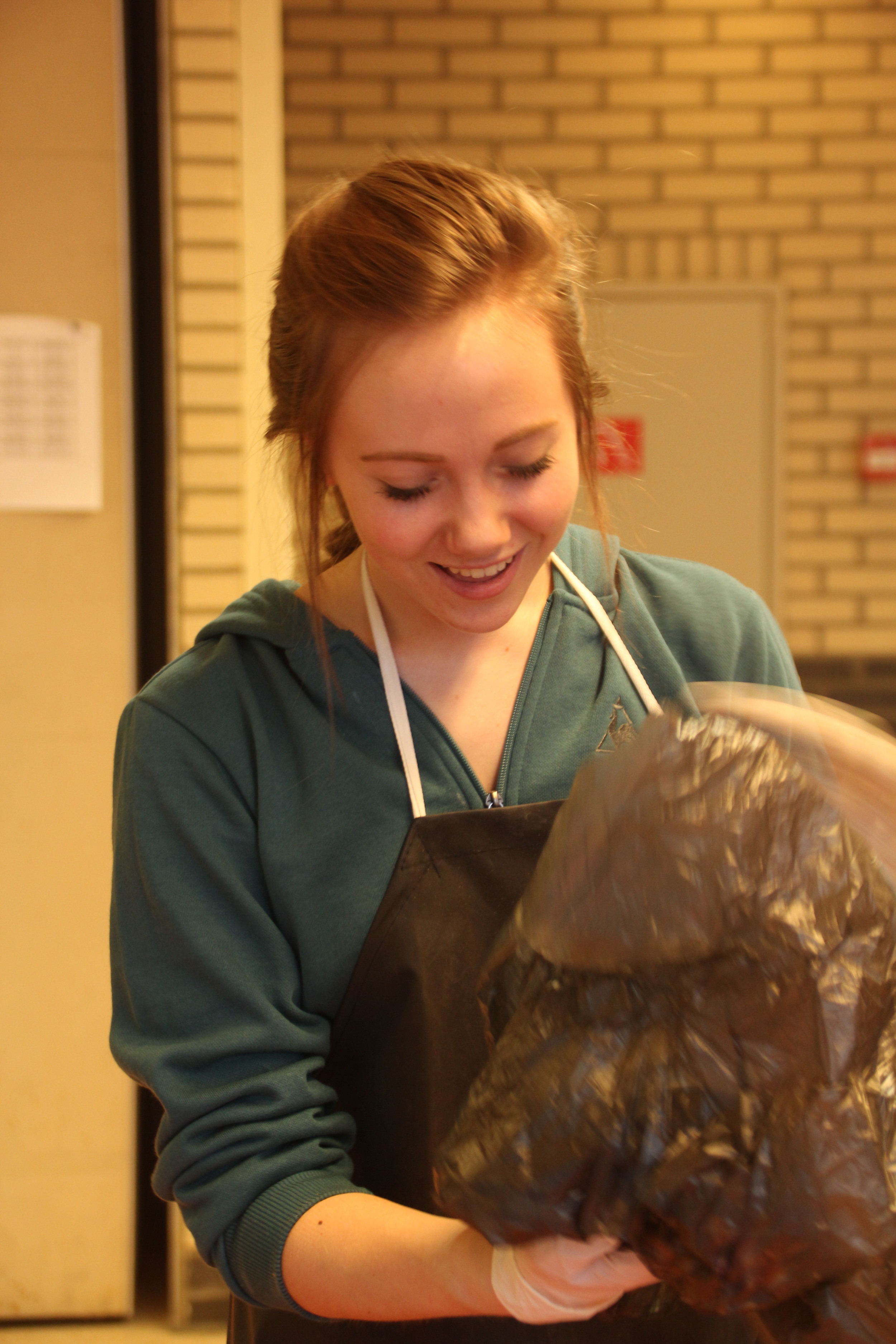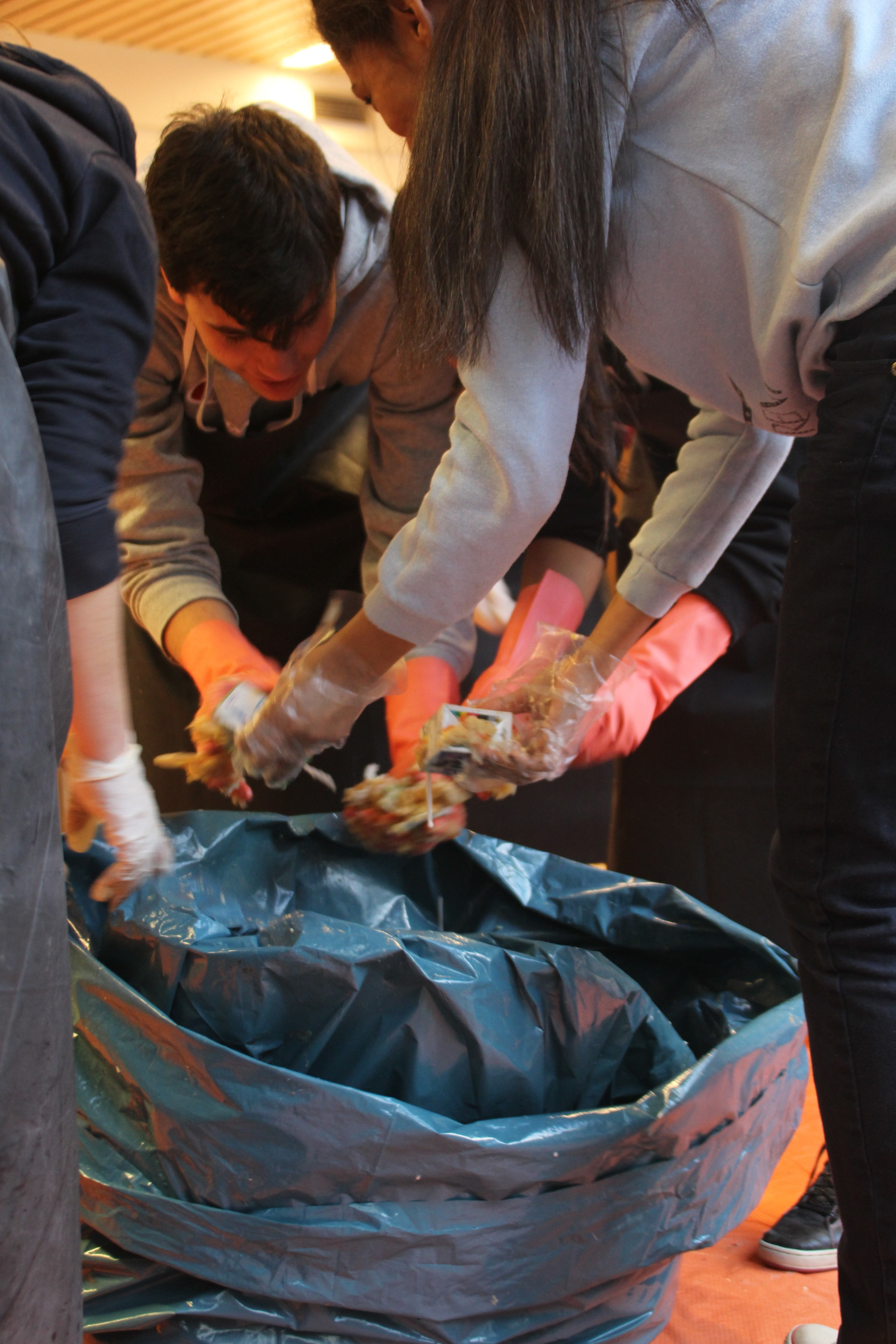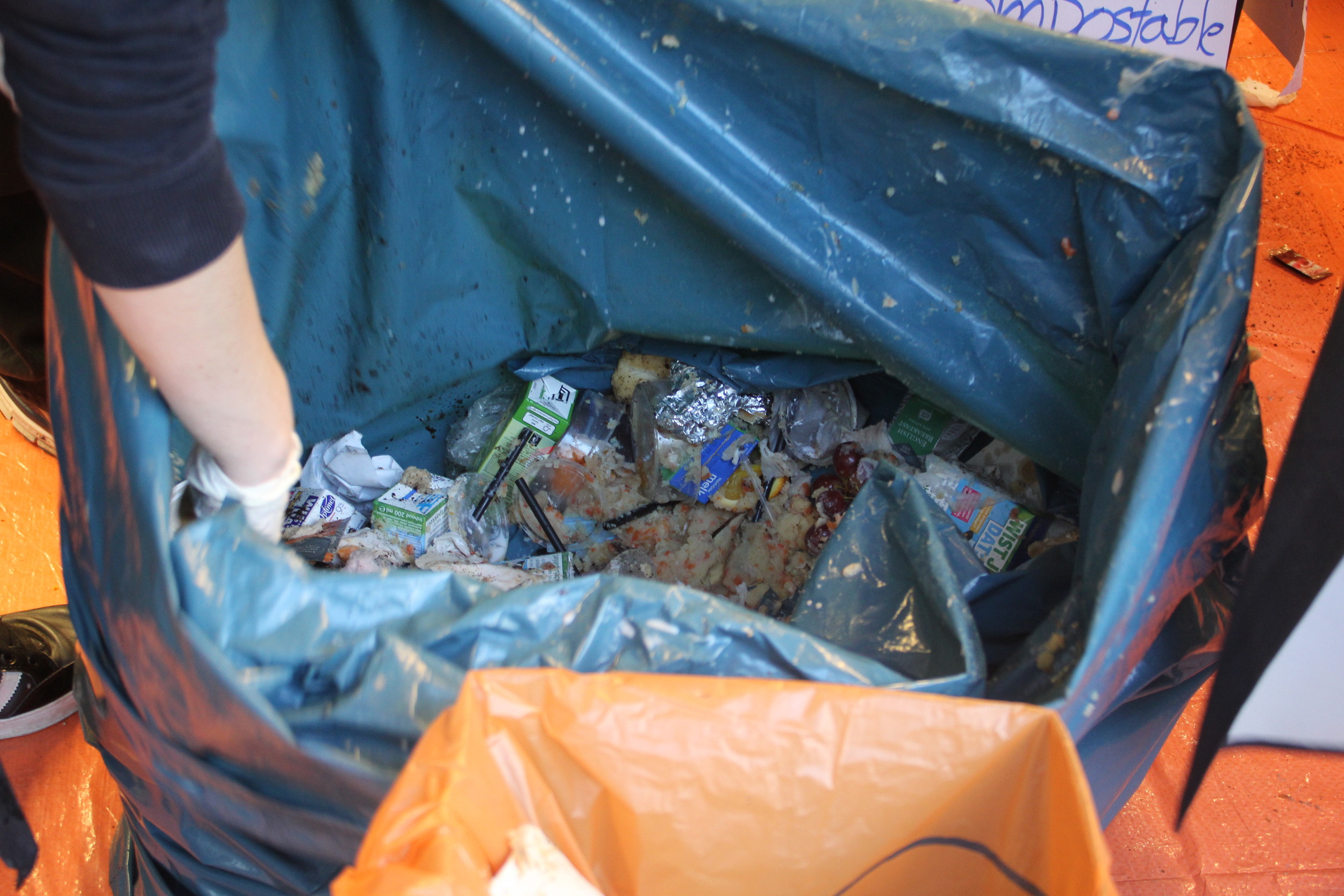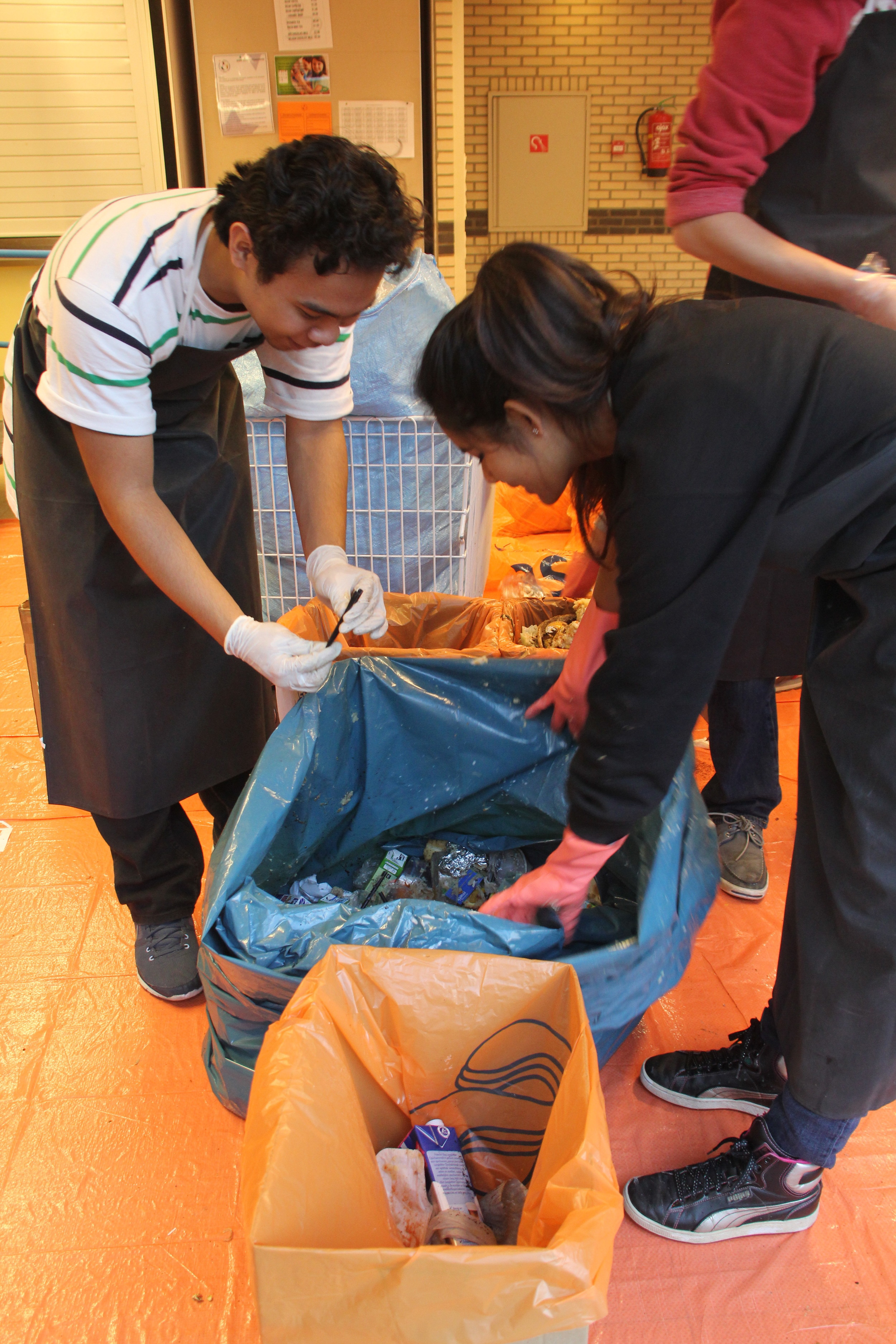The rainforest has been hot and humid for us. Seriously, I’ve never been so permanently wet in my life. Nothing dried, not even our hair. As we leave La Suerte we are hoping the sea might bring us refreshment. We endure a long bus ride and then boat ride before we arrive at Pacuare, a Nature Reserve on the Caribbean. We lug our baggage from the boat along a forested trail to quaint cabins situated right where rainforest meets beach. Though there is no electricity and the fresh water is limited, we settle right into what we find to be cozy accommodations.
And, most importantly, the beach does afford us a refreshing breeze and we feel the sticky hot sliding from our skin. That evening we begin our night patrols: under a full moon, beautiful breezy weather with the water lapping at our ankles. “This is perfect. How hard can this be?” we ask. Well, the next night yields a different experience.
Eva grips my hand with the iron-man clasp prompting my comment, “This is the most ridiculous thing I’ve done in my life.” We can’t even see each other it’s so dark. Each step we take is into a black abyss leaving us completely reliant on the pair in front of us to give warning of any obstacles they encounter (i.e. dips in the sand, drift wood, logs, washed up coconuts, etc.). The rain drenches every part of my lower body and raindrops slide down my back as rain penetrates my jacket. The downpour pelts us ferociously and we stumble forward over sticks and other debris.
Unusually wet conditions and flooding of the beach has prevented many leatherback turtles from accessing the beach and has destroyed the nests of many who did make it ashore. Thus, our night patrols yield no sightings of mother leatherback turtles or hatchlings. Were any of our groups to spot either mothers or hatchlings they would have participated in taking measurements and recording important data relevant to the conservation of this magnificent species. We did, however, get lucky one day…
Part of the work at Pacuare involves monitoring known nesting sights (those that were observed being created on night patrols). Once a nest has passed it’s “due date” researchers dig up the eggs to determine whether there are survivors or whether the nests have succumbed to fungi or bacteria rendering undeveloped eggs. Students were interrupted from their research projects with news that a nest of survivors had been discovered.! We ran to the beach to watch the nest-investigation process.
Baby leatherbacks exit their shells and begin the 1 m (more or less) dig to the surface, with the leaders resting while others take the lead. They work in shifts until the entire hatchling group makes it to the surface. However, if most of the nest doesn’t hatch (as in the case of the one uncovered), the survivors have no chance to get to the surface as they don’t have the energy to do it alone.
The woman in the green kerchief to the right is researching the correlation between fungus and bacteria growth on and in the eggs with survival of the hatchlings. She collects data on each egg and then saves the survivors in a bucket of sand until they are ready to make their “run” for the ocean (a process critical for their ultimate survival). Another nest unveils even more survivors. We are fortunate to be invited to the release of these babies later in the afternoon.
At the given time we all meet on the beach and the bucket is turned over to allow the babies to begin their journey to the sea. Together we share in this amazing experience under beautiful blue skies with sunrays warming our skin. It’s perfect and I’m so glad the students (and teachers!) are fortunate enough to get this experience.
Data collection and turtle observation is coupled to real-life research experience for the students. Now the students are working on their comparative studies. Heads are bent with intensity. Hands are holding measuring devices, recording data, or pointed at interested parts of the experiment.
Their topics include:
- Do members of our group throw a coconut further over or underhanded?
- Is there a difference between two species of ants’ time to run through a maze?
- What is the difference in time between a leaf cutter ant’s walk over 1 m with and without a leaf?
- What is the difference in time between a leaf cutter’s ascent vs. descent on the particular stem of a plant?
Discussions on sustainability and conservation continue throughout our time there. Students sample Costa Rican fruits and play a football (soccer) game with local youth. Our experience is fully rounded with conservation, science, and culture.
During what was supposed to be our last day a Pacuare, we are evacuated due to extreme rain and possible flooding of the area. Though our time there is cut short, we leave fulfilled with what we experienced. Our remaining time in Costa Rica includes a visit to the Botanical Gardens and a day of rafting.
We compare the food waste from our first days to our last days. We’ve reduced our food waste from over I kg down to fewer than 200g. WOW- habits have changed. Students are also masters of the 2 min (or less) showers. They are thinking sustainably. For their last activity, students engage in an activity that involves ‘building’ sustainable towns. They realize how difficult it is to communicate and bring people together towards one goal. They are humbled with the task of making the world more aware of the importance of conservation and living sustainably. They know they’ll start with their families.
Eva and I reflect on this experience and whether it was worth it and whether we would consider doing another trip (I'll write about that next). We hope none of us will return home and forget about the lessons we have learned here. Cleansed from a warm shower and feeling fulfilled, Eva and I slip into slumber anticipating our long flight journey home.
NEXT POST: Costa Rica Ecology Service Learning Trip: Reflections and Was it Worth it?
A baby leatherback turtle entering the water
To learn more about Ecology Project International (EPI), click here.
